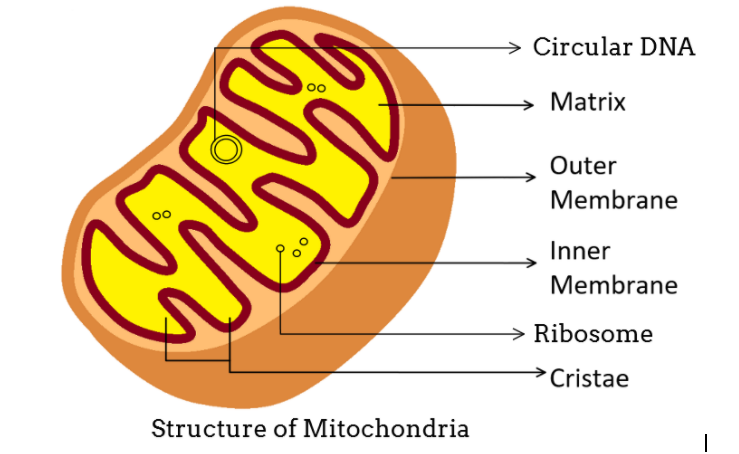
Mitochondria is regarded as a semi-autonomous organelle, due to the presence of
(a)DNA
(b)Ribosomes
(c)Vacuole
(d)Both A and B
Answer
503.4k+ views
Hint: They are regarded as semi-autonomous cell organelles due to the presence of two substances mainly. One of them has a circular structure and a similar structure is found in prokaryotic bacterias known as a plasmid. The other helps in protein synthesis and has two subunits with different sedimentation coefficients.
Complete answer:
Mitochondria are regarded as semi-autonomous organelle please due to the presence of DNA (deoxyribonucleic acid), that can replicate independently and synthesize their proteins with ribosomes. Mitochondrial DNA is known as Mt- DNA and ribosomes are called mitoribosomes.

The mitochondrial DNA produces mRNA, tRNA, and rRNA on its own which is translated into proteins by the mitoribosomes.
However, their structure and functioning are controlled by the nucleus of the cell and by the availability of cytoplasmic material hence they cannot exist independently because of which they are called semi-autonomous cell organelle.
So, the correct answer is, “Both A and B”.
Note: Mitochondrial DNA is responsible for maternal inheritance. mt-DNA is only a small portion of DNA in Eukaryotic cells which encodes only for 37 genes. In most species including humans, mtDNA is inherited solely from the mother therefore responsible for maternal inheritance.
Along with mitochondria, chloroplasts are also considered as semi-autonomous organelle which means it has its DNA and ribosome.
Complete answer:
Mitochondria are regarded as semi-autonomous organelle please due to the presence of DNA (deoxyribonucleic acid), that can replicate independently and synthesize their proteins with ribosomes. Mitochondrial DNA is known as Mt- DNA and ribosomes are called mitoribosomes.

The mitochondrial DNA produces mRNA, tRNA, and rRNA on its own which is translated into proteins by the mitoribosomes.
However, their structure and functioning are controlled by the nucleus of the cell and by the availability of cytoplasmic material hence they cannot exist independently because of which they are called semi-autonomous cell organelle.
So, the correct answer is, “Both A and B”.
Note: Mitochondrial DNA is responsible for maternal inheritance. mt-DNA is only a small portion of DNA in Eukaryotic cells which encodes only for 37 genes. In most species including humans, mtDNA is inherited solely from the mother therefore responsible for maternal inheritance.
Along with mitochondria, chloroplasts are also considered as semi-autonomous organelle which means it has its DNA and ribosome.
Recently Updated Pages
Master Class 9 General Knowledge: Engaging Questions & Answers for Success

Master Class 9 English: Engaging Questions & Answers for Success

Master Class 9 Science: Engaging Questions & Answers for Success

Master Class 9 Social Science: Engaging Questions & Answers for Success

Master Class 9 Maths: Engaging Questions & Answers for Success

Class 9 Question and Answer - Your Ultimate Solutions Guide

Trending doubts
State and prove Bernoullis theorem class 11 physics CBSE

Who built the Grand Trunk Road AChandragupta Maurya class 11 social science CBSE

1 ton equals to A 100 kg B 1000 kg C 10 kg D 10000 class 11 physics CBSE

State the laws of reflection of light

One Metric ton is equal to kg A 10000 B 1000 C 100 class 11 physics CBSE

Difference Between Prokaryotic Cells and Eukaryotic Cells




